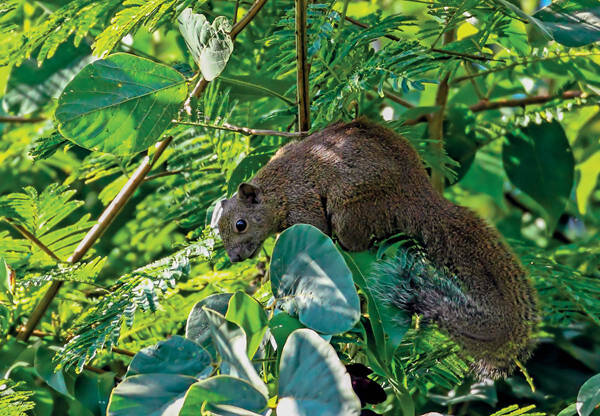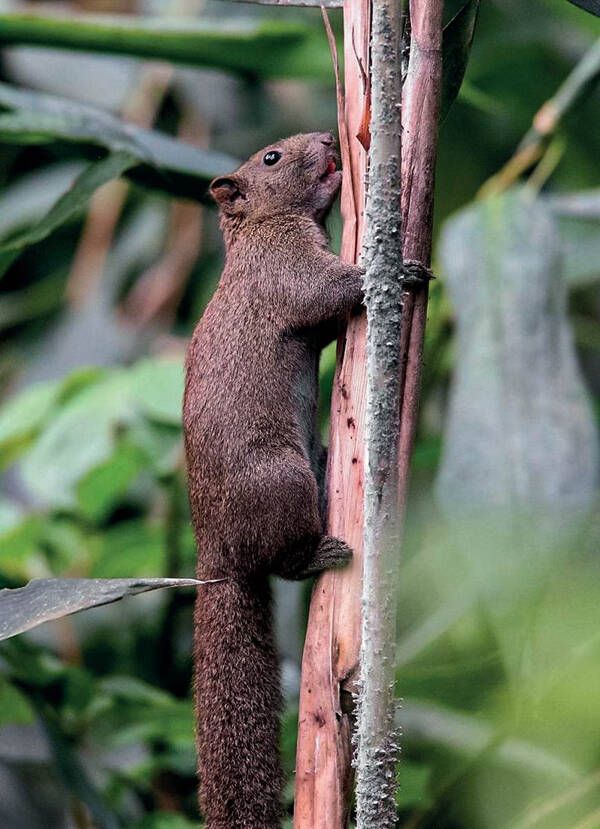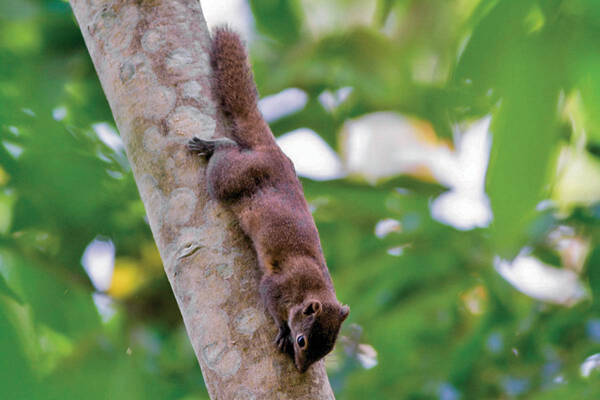Callosciurus pygerythrus imitator
IUCN
LCBasic Information
Scientific classification
- name:Callosciurus pygerythrus imitator
- Scientific Name:Callosciurus pygerythrus imitator,Irrawaddy squirrel, Yunnan squirrel
- Outline:Rodents
- Family:Rodentia Sciuridae Sciurus
Vital signs
- length:160-185mm
- Weight:
- lifetime:
Feature
The tail is usually longer than the body but narrower, and the tip is usually black.
Distribution and Habitat
Distributed in Yunnan and Tibet in China. Distributed abroad in India, Nepal, Myanmar, Vietnam, etc.
It inhabits tropical rainforests, monsoon forests, subtropical monsoon evergreen broad-leaved forests and sparse shrubs. It is mostly active on dwarf trees with vines at the edge of the forest. It is also occasionally seen on sparse trees or fences near villages. The altitude of its habitat is generally not more than 1000m.
Appearance
The dorsal surface of the body is dark olive brown. The ventral surface is gray, blue-gray, light red, reddish-gray and light yellow. The sides of the body are gray-brown. The buttocks have light spots. The fur on the dorsal tail is similar to that on the dorsal surface of the body, and the fur on the ventral tail is lighter than that on the dorsal surface of the tail. The tip of the tail is often black. The skull is slightly smaller than that of the red-bellied squirrel. The length of the nasal bone is shorter than the width between the orbits. The rear edge of the frontal bone is straight. The incisor foramen is small. The middle of the rear edge of the frontal bone is slightly convex. The rear edge of the third upper molar exceeds the horizontal line of the rear edge of the frontal bone.
Details
Blue-bellied squirrels are distributed in southwestern China, including southern Yunnan and Medog in southeastern Tibet. There are 8 subspecies of blue-bellied squirrels, and only one subspecies in China, namely the Yunnan subspecies.
Blue-bellied squirrels are diurnal and usually act alone. They feed on flowers and buds of plants, and also eat insects.
It has been included in the "National List of Terrestrial Wildlife with Important Economic and Scientific Research Values under State Protection".
It has been included in the China Biodiversity Red List - Vertebrate Volume, and the assessment level is Vulnerable (VU).











